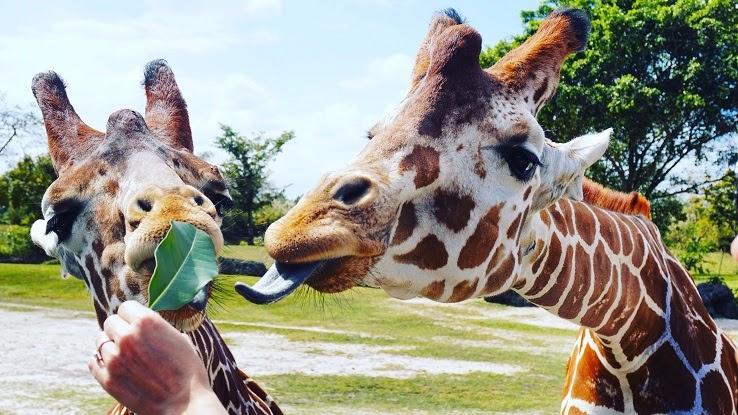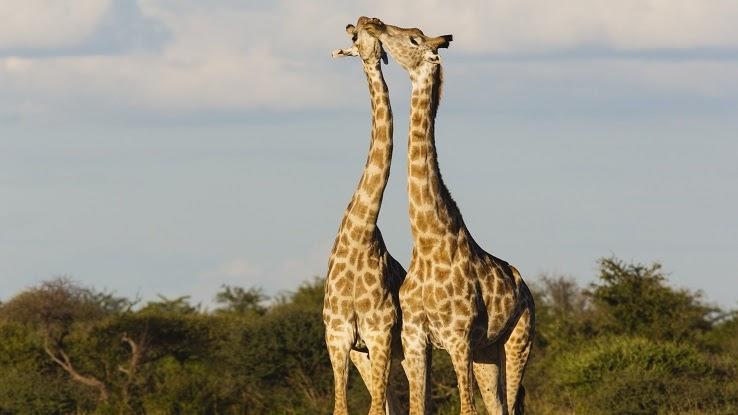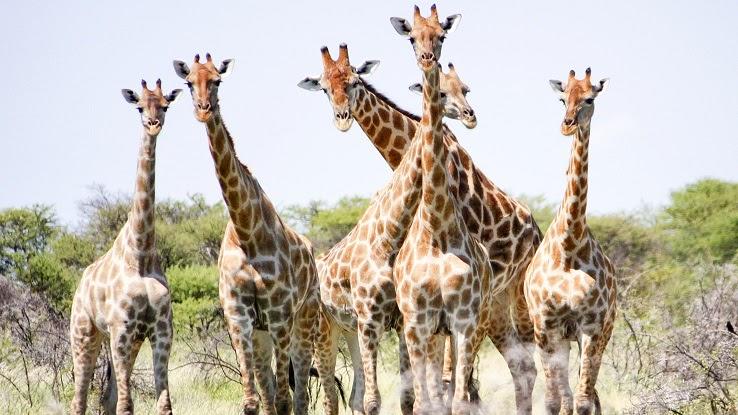National Wildlife Day: Do Giraffes Hold the Key to Treating Hypertension?

The average giraffe stands about as tall as a house and weighs nearly as much as a Toyota Camry, so it’s not much of an understatement to say that there’s something outstanding about giraffe anatomy. But these majestic creatures, which are native to Africa’s savannah grasslands, aren’t just unique for being the world’s tallest mammals. Their bodies have evolved a number of other special biological features that help them thrive — but could be deadly to humans and other animals.
One example? For giraffes, having extremely high blood pressure is actually a sign of good health, and low blood pressure could be a life-threatening event. While the reasons why aren’t fully understood yet, scientists have been researching the beneficial aspects of high blood pressure in giraffes and discovering interesting findings that may have future implications for our own health. The biological adaptations that allow giraffes to evade the damaging impacts of high blood pressure are now giving scientists ideas for treating hypertension in humans.
Why Exactly Do Giraffes Have High Blood Pressure?

Like us, giraffes rely on constant blood flowing around their bodies to deliver oxygen and nutrients to their brains and hearts. But unlike us, giraffes’ brains and hearts can be 10 feet apart — a long distance for the animals’ hearts to pump blood that needs to get to their brains. The blood in a giraffe’s circulatory system endures an uphill battle to travel up its legs and long neck and into its head. So, giraffes actually require high blood pressure to fight gravity and propel their blood up to such a height.
In humans, normal blood pressure is about 120/80 mmHg, but normal blood pressure for a giraffe is a much higher 280/180 mmHg. Despite the benefits of having high blood pressure, giraffes still have similar vascular, connective and visceral tissues that most other mammals do. Long-term high blood pressure, or hypertension, normally damages these structures and organs. Yet, giraffes have special adaptations that help them endure the pressure of their own blood.
Giraffes Have Special Hearts

Liquid under pressure can be hard enough to scour surfaces and sharp enough to cut objects. While high blood pressure doesn’t have the same effect as a pressure washer being sprayed in our internal organs, in humans, hypertension causes the walls of organs to thicken and eventually harden — a process called fibrosis that can prevent those bodily structures from working properly. Hypertension-induced fibrosis is one of the leading causes of heart failure in humans. The same damaging process can also happen in the kidneys of people who live with hypertension. Both conditions can be life-threatening and life-altering.
Giraffes don’t experience this type of organ failure from hypertension. A study of 136 giraffes that died from natural causes revealed that the animals each had a group of five specialized genes that altered their heart tissue. The giraffes’ hearts were thicker on one side, which is the first sign of the wear and tear caused by hypertension. Yet, none of their hearts had progressed to develop the stiffening that comes along with fibrosis. Three of those specialized genes found in giraffes encourage fibrosis formation, and the other two genes block the formation of fibrosis in the organs.
The exact effect of these genes is still under investigation, but scientists hypothesize that the combined opposing effect of the genes remodels a giraffe’s heart so that it can grow larger in response to prolonged exposure to high blood pressure. There may be a mechanism in the genes that stops a giraffe’s heart from developing fibrosis and incurring damage from the pressure. As scientists learn more about giraffe genes, there’s hope that these biological markers can be isolated and potentially incorporated into medications for humans.
And Their Legs Are Unique, Too

One of the more common signs of hypertension in humans is swelling in the lower extremities. Blood under high pressures can push water out of cells, and it pools up in nearby tissues, causing them to swell. Compression stockings can help mitigate this hypertension-related issue because they prevent fluid from building up in body tissues.
Another interesting facet of giraffe anatomy? They have built-in compression stockings — sort of. The connective tissue around their legs is naturally much harder and thicker than their tissue elsewhere. Scientists discovered this tissue when administering injections to giraffes that were receiving treatment. It takes considerably more pressure to inject giraffes in their legs than it does in any of the animals’ other body parts because the connective tissue forms a sort of wall preventing the swelling that could otherwise occur due to their high blood pressure.
Scientists are also studying the special type of thickened arteries giraffes have around their knees. More research is needed, but scientists theorize that giraffes can control the pace at which blood flows to their legs by voluntarily constricting these arteries. High blood pressure that flows at a lower volume is much easier for their bodies to handle.
How Can Giraffes Help Humans With High Blood Pressure?

Currently, much of the focus on treating hypertension in people is on lowering blood pressure with lifestyle changes and medications like ACE inhibitors, beta blockers and vasodilators. Some people with hypertension need to be put on lifelong medication with increasing doses to manage their high blood pressure, and these medications can have troubling side effects.
Some people develop hypertension at an early age or irrespective of diet and lifestyle choices, so diet and exercise don’t always result in improvements. Some of the most serious pregnancy complications involve uncontrolled hypertension, and treatment methods can be dangerous for pregnant people. Often, the safest method of treatment is to induce preterm labor, which is a high risk for both the parent and baby.
Medicine that could prevent some of the damaging health effects of hypertension could be life-changing, particularly for people whose high blood pressure has no underlying cause. There’s hope that medication made from giraffe genes could treat the effects of hypertension; giraffe genes allow the animals’ hearts to withstand high blood pressure without becoming damaged, and a similar kind of medication could prevent the gradual effects of organ failure in people.
Scientists in the field of biomimetics also hope to create new medical devices based on the arteries and connective tissues of giraffes. Devices that could strengthen or support the connective tissue inside a person’s leg could amplify the positive effect of support stockings. Just as science already has shunts and stents that help our circulatory systems function better, scientists may be able to create devices that can strengthen and strategically constrict specific arteries that are most prone to damage from hypertension. These innovations could extend the lives of people whose bodies have already been damaged by high blood pressure.
The natural world is full of living wonders, and giraffes are certainly no exception. Although the scientific community is unsure what the future may hold in terms of effective human treatments based on giraffe biology, it’s becoming clearer that there’s much we can learn from these evolutionary marvels.





